We would like to provide answers to all the questions that come to mind about Morocco in terms of general culture for those who are planning to visit. Having prior knowledge about the country you are going to, regardless of whether you are traveling with a tour or independently, helps you explore and experience the country more comprehensively.
The Language of Morocco
The official language of Morocco is Darija Arabic, which is a Moroccan dialect of Arabic. It is a language unique to Morocco. Arabic is written and read from right to left.
The unofficial second language is French. Despite gaining independence in 1956, French is spoken by people of all ages in almost all parts of the country.
Another prevalent language in Morocco is Spanish. Spanish is commonly spoken in cities such as Tetouan, Chefchaouen, Tangier in the north, as well as Sidi Ifni in the south.
The native language of Morocco is Tamazight. The indigenous people of Morocco are Berbers, and they speak the Tamazight language. Berbers living in the Middle and High Atlas Mountains predominantly speak Tamazight.
The Capital of Morocco
While Rabat is the capital of the country, it is neither the largest city nor the most popular destination in Morocco. Rabat serves as the administrative center where major decisions are made. The first settlers in Rabat were the Phoenicians, followed by the Romans, and later came under Arab control after the fall of the Roman Empire. In 1912, when the French occupied Morocco, Rabat became the administrative capital. It retained its status as the administrative capital when Morocco gained independence in 1956. Alongside Fes, Meknes, and Marrakech, Rabat is one of Morocco’s four imperial cities.
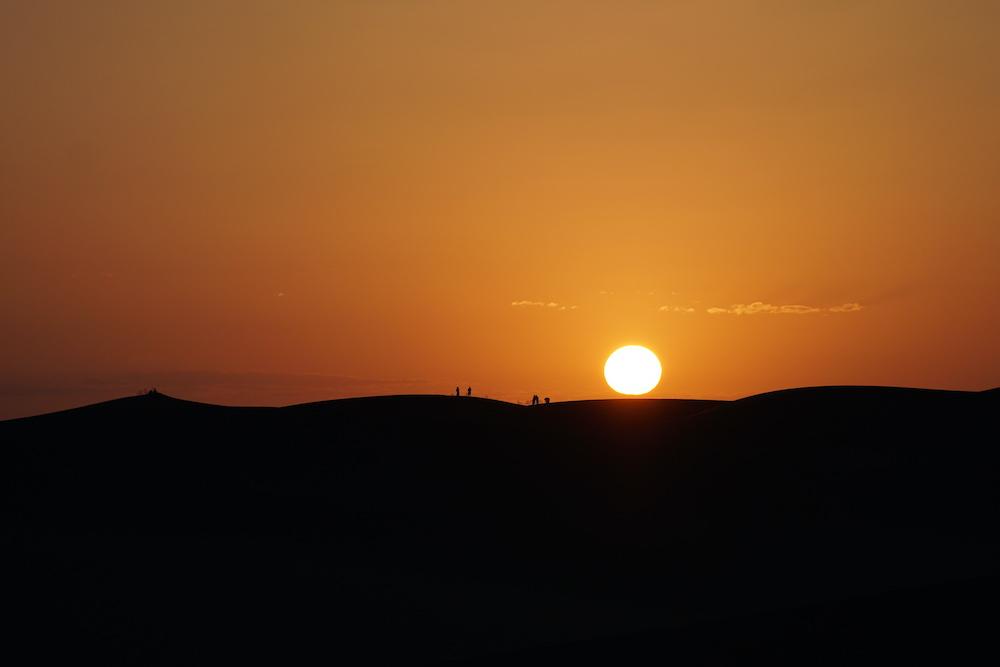
The Currency of Morocco
The currency of Morocco is the Moroccan Dirham. Its abbreviated form is MAD. However, it’s worth noting that Euro is accepted as a form of payment in hotels, restaurants, and travel agencies throughout the country. You can check the current exchange rate of the Moroccan Dirham to Euro on Xe. As of April 2023, 1 Moroccan Dirham is equivalent to 0.094 Euro.
The area of Morocco
Morocco has a total area of 710,850 square kilometers and a coastline that spans approximately 3,500 kilometers.
The Religion in Morocco
The official religion of Morocco is Islam, and approximately 99% of the population are Muslims. The majority of Muslims in Morocco follow the Sunni branch of Islam, while less than 0.1% are Shia Muslims. About 1% of the population consists of Christians and Jews.
Although many Jews have emigrated to Israel, it is still possible to find Jewish communities in Morocco. Cities like Fes and Casablanca have Jewish neighborhoods called “Mellah” where Jewish communities live.
In Morocco, people are free to practice the religion of their choice, but proselytism is prohibited.
Population of Morocco
The population of Morocco is 37 million.
Geography and Weather
Morocco is a country located in Northwest Africa. It shares its eastern border with Algeria and its southern border with Mauritania.
During the winter months, temperatures along the coast range from 7 to 17 degrees Celsius, while in the mountainous inland areas, temperatures can drop to freezing.
The best times to visit Morocco are in September-October and April-May.
Due to its extremely mountainous terrain and hosting the world’s largest desert, only about 17.5% of Morocco’s total land area is arable.
Morocco’s natural resources include phosphates, iron ore, manganese, lead, zinc, fish, and salt.
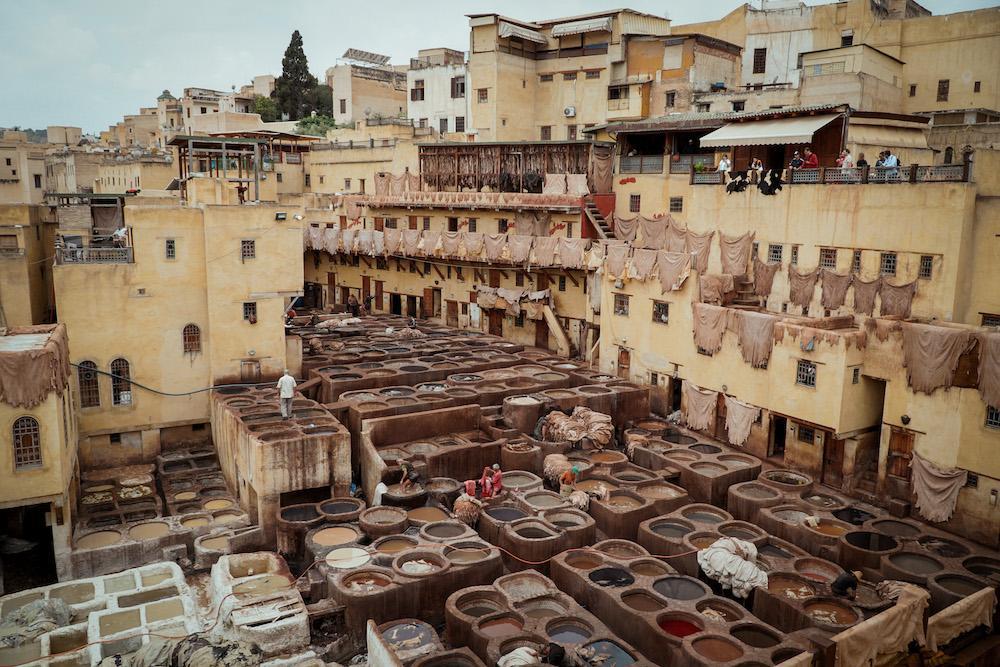
Culture in Morocco
While Morocco is famous for argan oil, it is not the country’s main export product. The most important export products are dates and olives. Additionally, Morocco is the largest exporter of sardines in the world. It is also highly successful in wine production. Although consuming alcohol in Morocco can be a bit challenging, it is renowned for its wine production and is among the leading countries in the field. Wine production in Morocco dates back to the Phoenician era, and approximately 40 million liters of wine are produced annually.
Cannabis is cultivated in Morocco, but its production does not mean it is legal. However, it is not entirely inaccessible either.
As Islam is the dominant religion in Morocco, approximately 99% of the population is Muslim. Despite being a progressive Muslim country, it is advisable to avoid wearing sleeveless and short clothing while traveling in Morocco. If you are a woman planning to visit Morocco, we recommend reading our article on the safety of women in Morocco.
The national drink of Morocco is mint tea, often referred to as “Moroccan whiskey.”
The Sahara Desert, the largest desert in the world, is located in Morocco.
Morocco is home to the indigenous North African ethnic group called the Berbers. The Berbers are often associated with a nomadic lifestyle and continue to live as nomads in the Sahara Desert and mountains.
The flag of Morocco consists of a red background with a pentagram (representing the Seal of Solomon and the Five Pillars of Islam) in the center.
The Economy of Morocco
The agricultural sector dominates the Moroccan economy, contributing around 12% to the GDP. The main agricultural products include barley, wheat, citrus fruits, grapes, vegetables, argan, olives, livestock, and wine.
In the industrial sector, industry contributes about 26.1% to the GDP. Key industries include textiles, leather goods, food processing, oil refining, and electronic assembly. Progress has also been made in sectors such as chemicals, automotive parts, computers, electronics, and the aviation industry.
The service sector holds the largest share in the Moroccan economy, accounting for over half of the GDP at 51.6%. The tourism industry is a significant activity within the service sector.
Overall, Morocco has been working towards diversifying its economy and attracting investments in various sectors to promote economic growth and development.
Regime of Morocco
According to as per Article 1 of the 2011 Constitution, Morocco is a constitutional, democratic, parliamentary, and social monarchy. It is governed by the monarchy. The current King of Morocco, who has been in power since July 23, 1999, is King Mohammed VI.
The King serves as the commander-in-chief of the Moroccan Armed Forces and is also a religious leader as the Commander of the Faithful.
The Prime Minister is the head of the government and is accountable to a two-chamber parliament and an independent judiciary.
Despite being located in Africa, Morocco is the only country on the continent that is not a member of the African Union.
History of Morocco
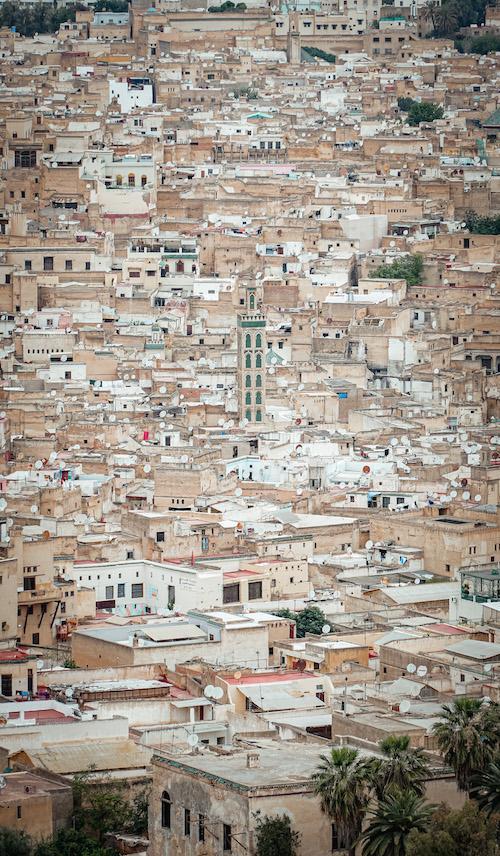
In the early 12th century BCE, the Phoenicians were the first to explore and discover Morocco. They established trading posts in the region.
In the 5th century BCE, several Berber kingdoms emerged under the hegemony of the Carthaginian Empire.
After the defeat of Carthage by the Romans, Morocco came under Roman influence. Volubilis, a Roman city built on the ruins of Carthaginian structures, is one of the best-preserved Roman sites in Africa. Although it was established as a Roman city in the 3rd century CE, it is believed to have been founded by the Phoenicians who reached North Africa and Spain in the 2nd century CE. Volubilis has been listed as a UNESCO World Heritage site since 1997.
Christianity arrived in Morocco in the 2nd century CE, along with the Jewish community. In the 5th century CE, certain regions of Morocco were ruled by Jewish kingdoms. Later, in the 7th century CE, Arabs under the rule of the Umayyad Caliphate of Al-Andalus conquered the region, leading to the conversion of many people to Islam.
789-10th Century: Idrisid Period: The Idrisids were the first Islamic royal dynasty to rule over Morocco. After the Arab prince appointed by the Berbers, Idris I, was killed by an agent of the Abbasid Caliphate, Idris II succeeded him and established the first royal dynasty in Morocco, with its capital in Fes. The Quaraouyine Mosque was constructed during the Idrisid period.
1069-1147: Almoravid Period: Following the Idrisids, the Almoravids came to power and established the empire. They founded the imperial city of Marrakech.
1147-1248: Almohad Dynasty: The Almohads, a Berber dynasty, ruled during this period. They made Rabat the imperial city and built structures such as the Hassan Tower in Rabat and the Koutoubia Mosque in Marrakech. Some sources state that Marrakech was made the capital. The Almohads forcibly converted Jews to Islam and destroyed synagogues, leading many Jews to flee Morocco.
It’s important to note that this summary covers a specific historical period, and there have been various dynasties and rulers throughout Morocco’s history.
1248-1548: Marinid Dynasty: When they came to power, they made Fes the capital. The Marinid period was known for the construction of numerous madrasas, making Morocco the country with the highest number of madrasas. During the Marinid era, Jews who had fled to Spain following its Christian conquest and the establishment of the Inquisition began to return to Morocco. The first Jewish quarter, known as Mellah, was established near the Royal Palace in Fes during this period, and the Jewish community began to flourish.
1548-1660: Saadian Dynasty: The Saadians rebelled against the Berbers and overthrew the Marinids. The Saadian Tombs in Marrakech are a legacy of this dynasty. Marrakech was the capital during their reign. The Saadians officially recognized Jews and provided them with special protection and taxation. During this period, Mellahs, or Jewish quarters, were established in many cities.
From 1660 onwards: Alaouite Dynasty: They came to power and moved the capital to Meknes. They fought against the Berbers. Sultan Moulay Ismail was a prominent ruler of this dynasty and built a magnificent palace in Meknes.
1912-1956: French Protectorate Period: After being under Spanish influence since 1884, Morocco came under French protection. Following the occupation, the Fes Agreement was signed, granting Spain control over the Tetouan region in the north and the Ifni region in the south. Except for the Tangier region, the coastal areas along the Strait of Gibraltar were ceded to Spain. During this time, Jews who had been expelled from Portugal and Spain sought refuge in Morocco.
1956: Independence of Morocco: On the day of independence, Sultan Mohammed V assumed the title of king. The government ensured equality between Jews and Muslims. Jews took over positions previously held by the French in the government.
Morocco has always been a land where various ethnic groups coexist, including Arabs, Sephardic Jews, Sub-Saharan Africans, and, notably, Berbers.
Things To Know Before You Go To Morocco
If you have finalized your travel plans to Morocco but still have lingering questions, this is the section we highly recommend reading before you go.
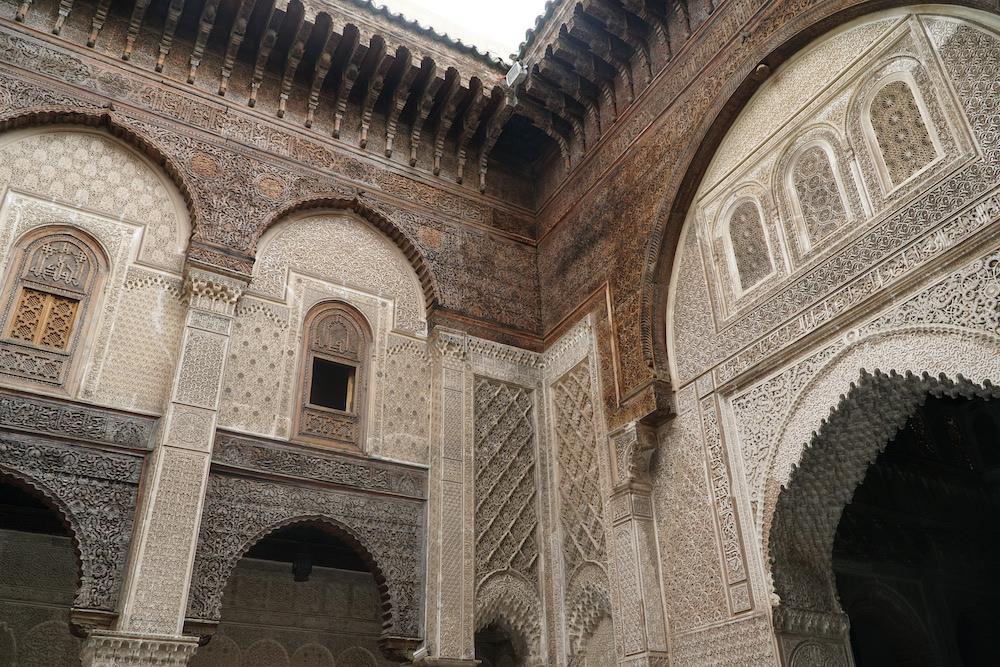
Keep in Mind the Cold Climate of Morocco
As Morocco is located in Africa, many of us assume that it has a hot climate throughout the year. However, it also experiences cold periods. Particularly, from November to March, the northern parts of the country can be quite chilly. We recommend packing as if you were going on a winter vacation. Additionally, an important thing to remember is that most riads (traditional Moroccan houses) do not have heaters, and breakfast or dinner places are often open-air courtyards. Make sure to check if your chosen riad or hotel has air conditioning or heating when making your reservation.
Do Not Take Photos of People Without Permission
The people of Morocco take the matter of photography seriously. Many of them, in adherence to Islamic beliefs and practices, may not wish to have their photos taken.
Within Islamic faith, there is a concept called aniconism, which prohibits the depiction of living beings (both animals and humans). This concept entails avoiding all forms of imagery depicting living beings. In Islamic architecture, this understanding is known as aniconism, which can be described as the absence of representational images of living beings.
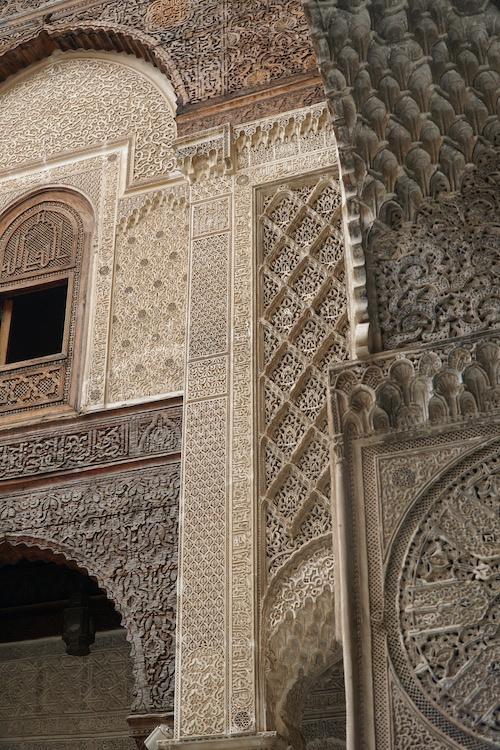
The concept of aniconism traces its origins back to periods preceding the emergence of the Islamic religion. During those times, people were often accused of idolatry, which was a prevalent practice in the pre-Islamic Arab society. With the advent of Islam, idolatrous practices were prohibited, and the Islamic community embraced aniconism as a way to avoid idolatry.
Aniconism has been effectively utilized in Islamic architecture, particularly in mosque architecture. Instead of depictions of living beings, geometric shapes, plants, and abstract patterns are employed. These shapes are considered important symbols within Islamic belief and are integrated into mosque architecture.
In conclusion, the concept of aniconism has been embraced in Islamic belief as a means to avoid the depiction of living beings. It has been effectively utilized in Islamic art and architecture, becoming an integral part of mosque architecture.
In Islamic art and architecture, we can clearly observe the influence of aniconism. Islamic art and architecture have focused on geometric patterns, calligraphy, and abstract designs as a result.
Permission to Enter Mosques
In Morocco, entry to many mosques is not permitted for non-Muslims. However, one mosque that allows entry for non-Muslims is the Hassan II Mosque in Casablanca.
Is Transportation Safe in Morocco?
The main modes of transportation in Morocco are trains, car rentals, and buses, all of which are generally safe. During our first trip to Morocco, we preferred using trains and buses as they were more budget-friendly compared to car rentals. Trains and buses offer comfortable journeys in addition to being secure. However, many people also choose to rent cars. If you opt for car rental, it is advisable to choose reputable companies such as Avis, Budget, Europcar, among others. One disadvantage of car rental in Morocco is the requirement of high deposits, often around 1000 Euros, in addition to the rental fee.
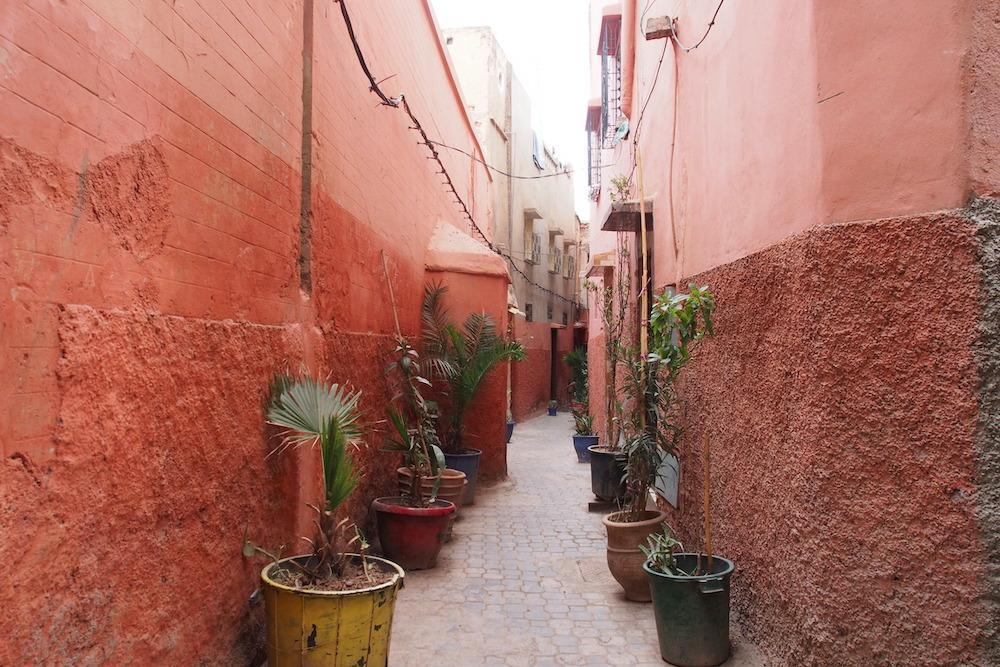
Language Issue in Morocco
The primary language spoken in Morocco is Arabic, and French is the second language. Unfortunately, English is not widely spoken throughout the country. When interacting with locals, they may speak to you as if you understand French or Arabic. Therefore, it is advisable to download Google Translate before your trip. This application can be very useful when communicating with someone who doesn’t speak English.
Don’t Get Lost in Morocco
Before traveling to Morocco, we highly recommend downloading the Maps.Me application, which is an offline map. Prior to your trip, you can zoom in on the specific cities you will be visiting in Morocco and download the map for those cities. Once you arrive at your destination, you can mark the places you plan to visit on the map and take notes. However, if you still find yourself lost, remember our repeated advice: do not seek help from men. When asking for directions, it is best to approach children or women. If you ask men for directions, they may lead you to a shop for their own benefit or even offer to guide you and then ask for money.
Finally,
We would like to mention that Morocco is known as the world’s largest producer of cannabis,
and the traditional attire is called “Djellaba.”
Moroccan Foods
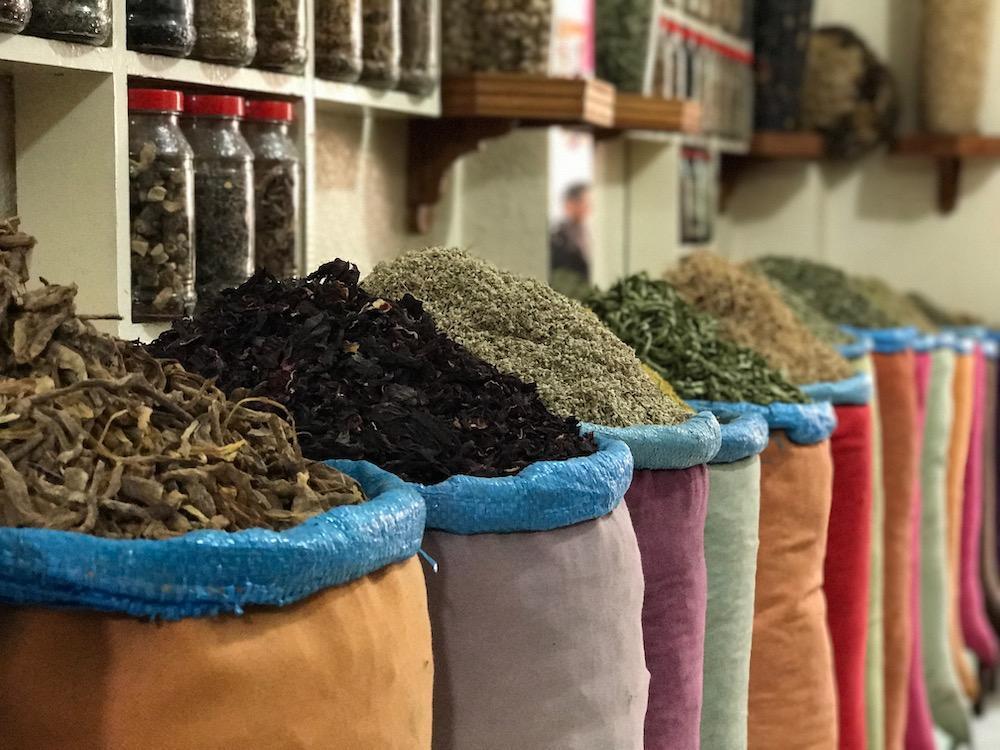
To truly experience Morocco, you must definitely taste Moroccan cuisine before you leave. It is a fact that a trip to Morocco is incomplete without trying Moroccan dishes. It is worth mentioning that Moroccan cuisine shares similarities with many traditional Spanish dishes. The main difference is the absence of pork in Moroccan cuisine and the abundant use of spices instead of Spain.
Olives: Morocco is the world’s 5th largest producer and exporter of olive oil, so olives are an essential part of Moroccan cuisine. However, the olives can be quite salty.
Kbubz Bread: The most important thing served before meals in Morocco is bread. Moroccan bread is characterized by its flat shape and being baked stuck to the walls of the oven.
Harira Soup: This creamy soup, made with chickpeas, also includes vermicelli and vegetables. It is seasoned with tomatoes, mint, and coriander. Harira soup is especially popular during the month of Ramadan.
Mezze: Mezze complements the Moroccan table. Some of the popular mezze dishes include tomato jam made with cinnamon, honey, and orange blossom, Zaalouk made with roasted eggplant, tomato, and plenty of spices, Matbucha made with roasted peppers, tomatoes, and garlic, Taktouka made with cooked green peppers, tomatoes, and spices, and Bissara made with mashed cooked fava beans and peas mixed with olive oil, sweet-spicy paprika, cumin, and salt.
Briouat: Briouat is similar to cigarette borek in our cuisine and can be considered as a type of samosa. It is usually served as a meze alongside main dishes.
Tajine: Tajine is arguably the most important dish in Moroccan cuisine. It is a delicious slow-cooked stew made with meat (beef), fish, or chicken, combined with vegetables, and cooked in a clay pot with a conical-shaped lid called a tajine. It is commonly prepared with dried apricots, almond chicken/lamb, olive, lemon chicken, or tomato and egg meatballs.
Couscous: Couscous, made from wheat semolina, is a staple dish often served with meat or chicken dishes.
Snail Soup: The best place to find snail soup is undoubtedly the Jamaa El Fna square in Marrakech. You will likely come across large pots of cooked snails. The snails are served in a bowl along with their broth. After removing the snail from its shell with a toothpick, you can enjoy it and sip the sweet broth.
Sheep’s Brain: Sheep’s brain is also consumed in our country, so we don’t think it will be a surprising taste for you like snails. However, I personally don’t prefer eating brain and other organs, so I haven’t tried it either.
Goat’s Head: We believe seeing a whole goat’s head on your plate might be the most challenging for some stomachs. However, there is a solution. If you don’t want to see the entire head, you can order a smaller portion or request it to be served in pieces.
Pastilla: Pastilla is a savory pie made with chicken or pigeon. It has a unique appearance, resembling a layered tart. It is made with minced poultry meat, dried raisins, pistachios, walnuts, and other dried fruits. Pastilla is served hot, and before eating it, it is customary to sprinkle powdered sugar on top.
Stuffed Msemen: Msemen is a traditional Moroccan pancake-like bread. Stuffed msemen is a variation where the dough is filled with various ingredients such as minced meat, vegetables, and spices, and then folded and cooked. It is a delicious and filling dish.
Mint Tea/Moroccan Whiskey: Mint tea is a beverage you will encounter everywhere in Morocco. It is made by steeping green tea leaves with plenty of fresh mint leaves and a lot of sugar. There is no specific time to enjoy this tea; it can be consumed before or after meals, during the day, or at night. Pouring the tea from a height is a tradition that indicates the importance of the guest.
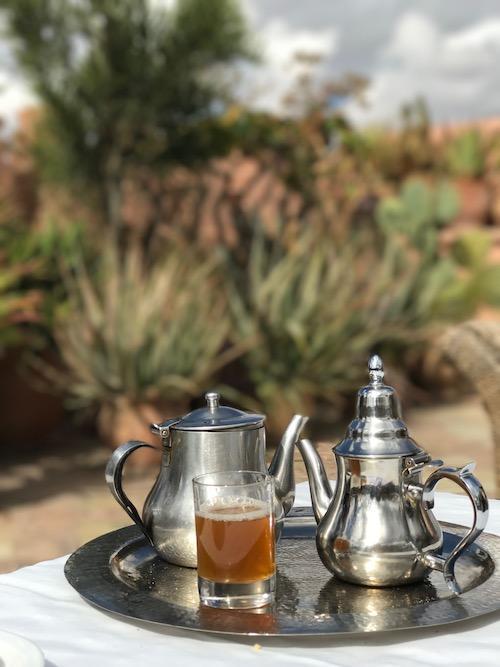
Note: “Moroccan Whiskey” is a colloquial term used to describe mint tea, and it does not refer to an actual alcoholic beverage.
Antler-shaped Pastry: It is a crescent-shaped pastry made with almond paste, cinnamon, and orange blossom water.
Ghoriba Cookies: These cookies are made with coconut, almonds, and orange blossom water. They are similar to our almond cookies but with the addition of coconut.
Important sweeteners and spices in Moroccan cuisine include: Cumin, coriander, sesame seeds, ras el hanout (a blend of about 30 different spices), orange blossom water (used in Moroccan desserts), and lemon (used in stews).
To read all our articles about Morocco, you can visit our Morocco page.
